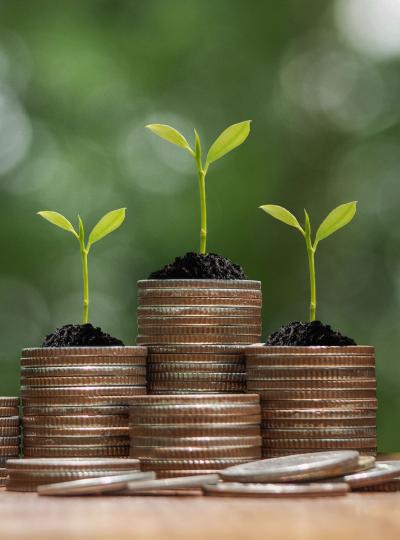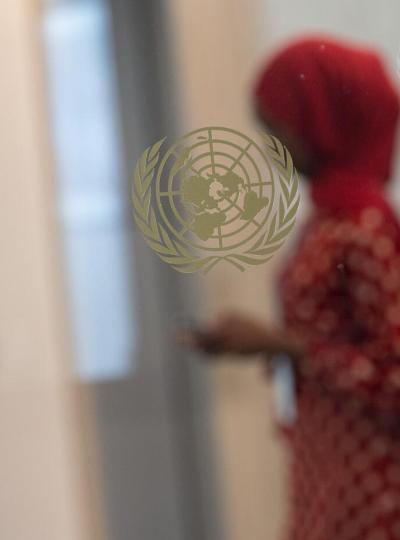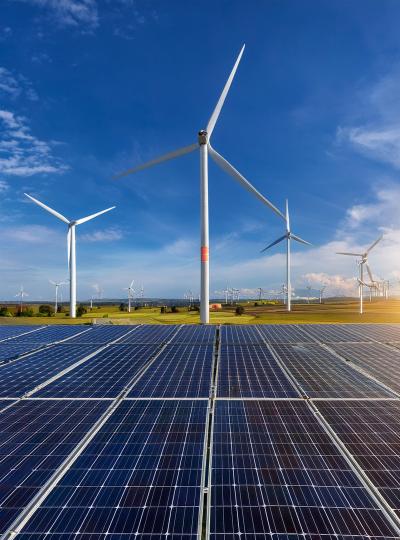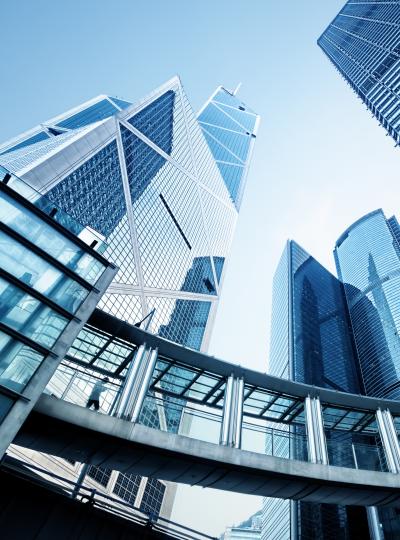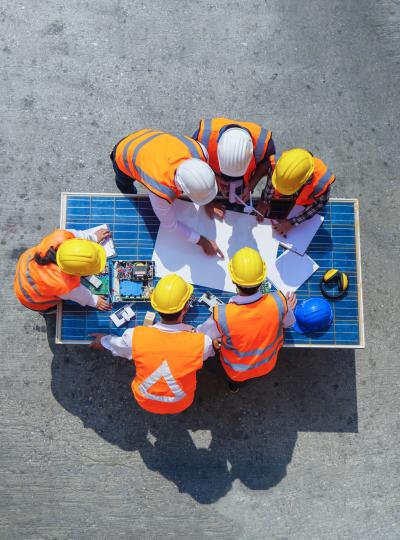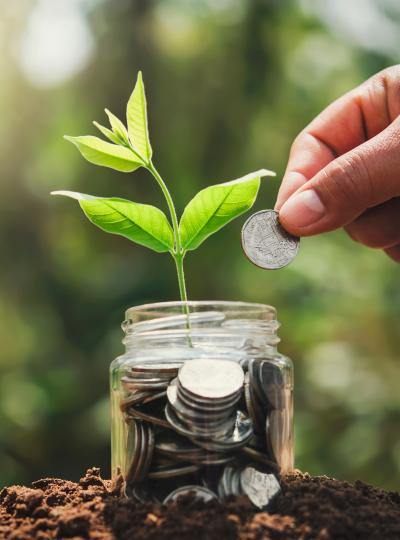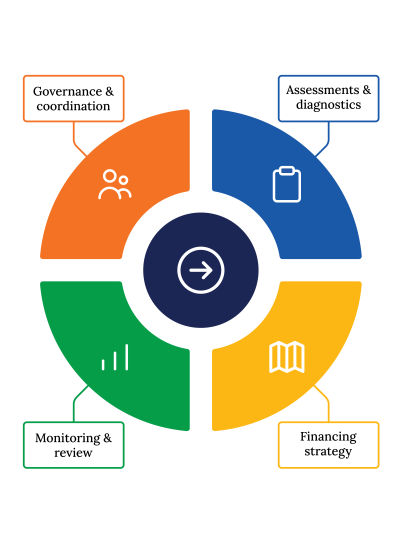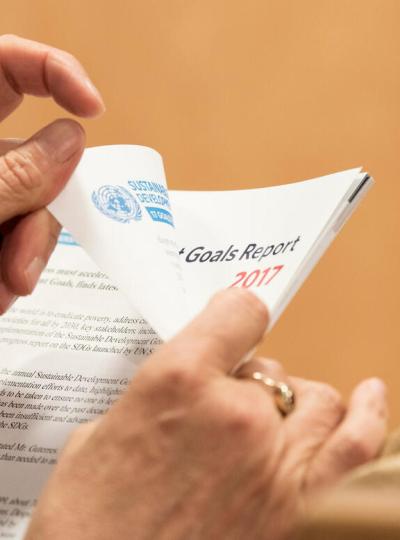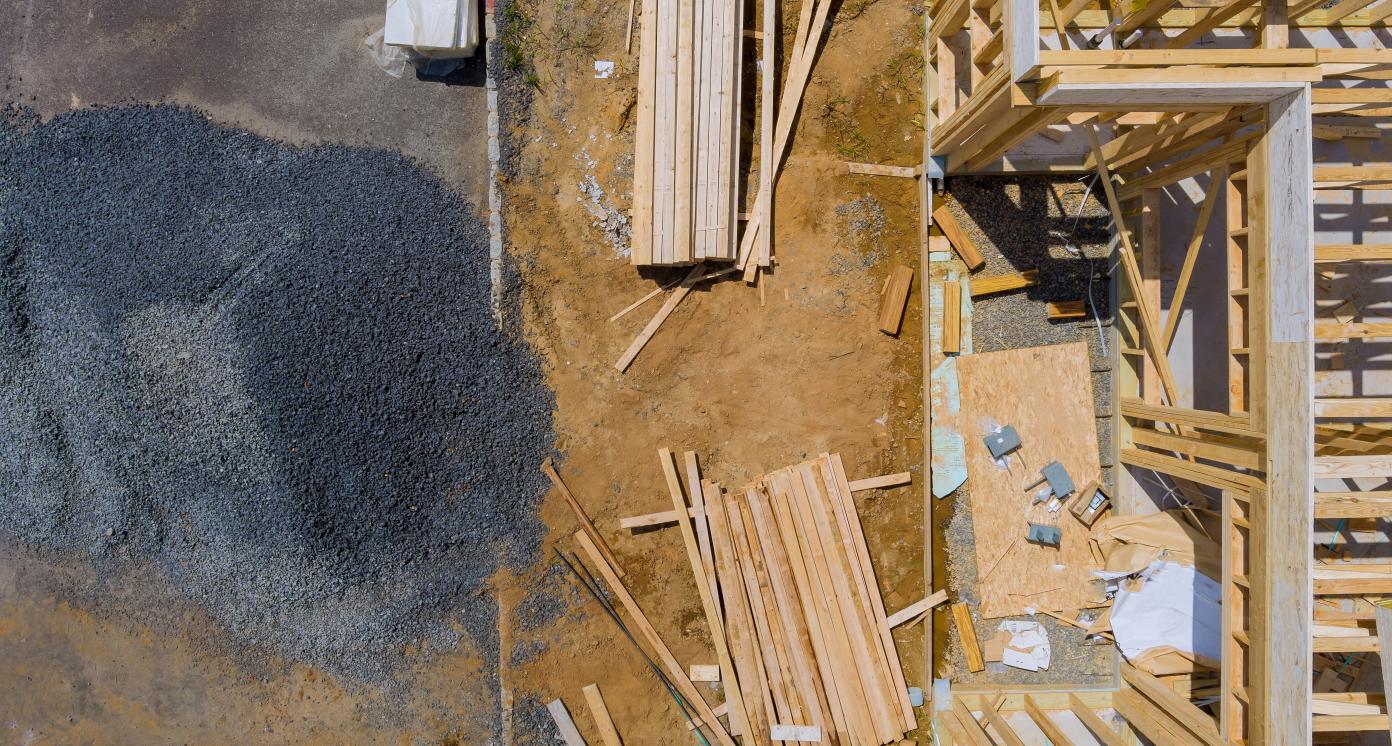Advanced construction materials manufacturing
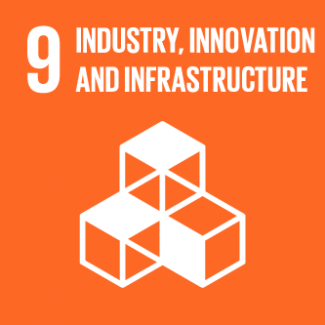
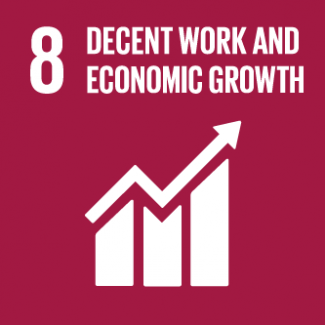
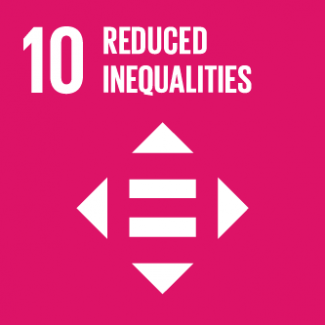
Business Model Description
Manufacture and supply eco-friendly construction materials through partnerships with developers, public projects, and wholesale agreements. Revenue streams include direct sales, government incentives, and cost savings from energy-efficient production. Collaboration with research institutions ensures continuous innovation and market competitiveness.
Expected Impact
Sustainable construction materials manufacturing aims to enhance sustainable infrastructure, expand renewable energy access, and promote economic inclusion by creating jobs and reducing disparities.
How is this information gathered?
Investment opportunities with potential to contribute to sustainable development are based on country-level SDG Investor Maps.
Disclaimer
UNDP, the Private Finance for the SDGs, and their affiliates (collectively “UNDP”) do not seek or solicit investment for programmes, projects, or opportunities described on this site (collectively “Programmes”) or any other Programmes, and nothing on this page should constitute a solicitation for investment. The actors listed on this site are not partners of UNDP, and their inclusion should not be construed as an endorsement or recommendation by UNDP for any relationship or investment.
The descriptions on this page are provided for informational purposes only. Only companies and enterprises that appear under the case study tab have been validated and vetted through UNDP programmes such as the Growth Stage Impact Ventures (GSIV), Business Call to Action (BCtA), or through other UN agencies. Even then, under no circumstances should their appearance on this website be construed as an endorsement for any relationship or investment. UNDP assumes no liability for investment losses directly or indirectly resulting from recommendations made, implied, or inferred by its research. Likewise, UNDP assumes no claim to investment gains directly or indirectly resulting from trading profits, investment management, or advisory fees obtained by following investment recommendations made, implied, or inferred by its research.
Investment involves risk, and all investments should be made with the supervision of a professional investment manager or advisor. The materials on the website are not an offer to sell or a solicitation of an offer to buy any investment, security, or commodity, nor shall any security be offered or sold to any person, in any jurisdiction in which such offer would be unlawful under the securities laws of such jurisdiction.
Country & Regions
- Republic of North Macedonia: Skopje
- Republic of North Macedonia: Southeastern
- Republic of North Macedonia: Southwestern
Sector Classification
Infrastructure
Development need
The Republic of North Macedonia faces infrastructure gaps that limit growth, regional balance, and climate resilience. Outdated transport, energy inefficiencies, weak digital networks, and lack of green infrastructure hinder development. Upgrades are vital for modernization, investment attraction, and EU alignment. (1)
Policy priority
The Republic North Macedonia’s national strategies emphasize green infrastructure, energy-efficient construction, and alignment with EU decarbonization goals. Financial incentives, grants, and regulatory frameworks encourage the adoption of sustainable building materials. (2, 5)
Gender inequalities and marginalization issues
The sector can create inclusive employment opportunities by engaging women and marginalized communities in production, research, and green technology applications. Training programs can enhance workforce diversity. (26)
Investment opportunities introduction
Growing demand for green materials presents investment potential in research, production, and distribution. Public-private partnerships and EU-funded programs provide financial backing for sustainable construction initiatives. (3, 2)
Key bottlenecks introduction
The advanced construction materials subsector faces limited expertise in green technologies, high upfront investment costs, and challenges in meeting EU standards. Overcoming these requires public-private collaboration, skills development, and targeted policy incentives. (3, 5)
Infrastructure
Development need
The construction materials sector must adapt to new market demands, regulations, and efficiency goals. Rising costs and import reliance emphasize the need for local production to boost self-sufficiency, innovation, and resilience. Expanding domestic capacity will drive economic growth and support modern infrastructure development. (4)
Policy priority
National and EU policies emphasize green construction, energy efficiency, and circular economy principles. Government incentives and regulatory frameworks encourage investment in eco-friendly building materials. (1,4)
Gender inequalities and marginalization issues
Expanding sustainable construction offers employment opportunities for marginalized groups. Training programs can support gender inclusivity in material production and green technology roles. (4)
Investment opportunities introduction
Rising demand for sustainable building solutions presents opportunities in manufacturing, R&D, and market expansion. Public-private partnerships and EU funding support the sector’s growth. (36)
Key bottlenecks introduction
The Republic of North Macedonian advanced‑materials firms lack solid inter‑industry, academia‑industry, and international partnerships. This limits access to leading R&D, technology transfer, and sustainable inputs, delaying adoption of circular‑design standards and EU certification. Stronger public‑private and cross‑border alliances are essential for sector growth. (5,39)
Engineering and Construction Services
Pipeline Opportunity
Advanced construction materials manufacturing
Manufacture and supply eco-friendly construction materials through partnerships with developers, public projects, and wholesale agreements. Revenue streams include direct sales, government incentives, and cost savings from energy-efficient production. Collaboration with research institutions ensures continuous innovation and market competitiveness.
Business Case
Market Size and Environment
USD 50 million - USD 100 million
5% - 10%
The market for sustainable construction materials in North Macedonia is estimated between USD 50–100 million. Growth is driven by increasing demand for energy-efficient infrastructure and the need to replace aging building stock with modern, compliant alternatives. (11)
The sector is projected to grow at a compound annual growth rate (CAGR) of 5–10%, driven by EU alignment requirements, rising energy prices, and incentives for green building. Public and private investments are expected to accelerate demand for locally produced sustainable materials. (11)
Indicative Return
10% - 15%
The sector has an estimated ROI of 10-15%, reflecting stable profitability as demand for sustainable materials grows. (13)
Investment Timeframe
Medium Term (5–10 years)
Infrastructure requires extensive planning, construction, and ramp-up. Returns typically manifest over 5–10 years, when operations reach maturity. This aligns with standard capital investment cycles, where revenue streams need time to stabilize and deliver consistent gains. (14)
Sustained investment fosters medium-term growth. Construction spurs early activity, but full benefits arise once projects are fully operational. Gradual revenue, connectivity gains, and higher productivity affirm a 5–10 year horizon for returns. (15)
Ticket Size
USD 1 million - USD 10 million
Market Risks & Scale Obstacles
Capital - CapEx Intensive
Impact Case
Sustainable Development Need
Outdated transport networks limit economic growth, raise emissions, and hamper connectivity. Current roads and rails struggle with capacity, affecting trade, mobility, and social inclusion. (28)
Rural areas face infrastructure gaps that restrict job creation, public services, and investment. Addressing these disparities fosters social equity and inclusive economic development. (29)
Gender & Marginalisation
Women in rural areas face limited job prospects due to poor infrastructure and restricted mobility. Fewer training resources compound income gaps and perpetuate inequality. (26)
Youth in underserved areas face limited digital access, restricting education and remote work, leading to unemployment and migration. Sustainable construction by expanding digital infrastructure, enabling greater youth participation in learning, innovation, and remote job opportunities. (30)
Expected Development Outcome
Greater connectivity through upgraded infrastructure boosts local employment, reduces travel times, and fosters inclusive economic growth. Improved access to services promotes equity and community well-being.
Cleaner transport solutions and smarter designs help lower emissions, protect ecosystems, and enhance public health. Such green improvements also attract responsible investors, spurring long-term sustainability.
Gender & Marginalisation
Increased employment opportunities for women and marginalized groups in sustainable construction, fostering economic empowerment and reducing gender disparities.
Capacity-building programs targeting underrepresented communities to provide training in green construction techniques, enhancing workforce inclusivity.
Primary SDGs addressed

9.2.1 Manufacturing value added as a proportion of GDP and per capita
As of 2023, manufacturing contributed approximately 12.39% to North Macedonia’s GDP, underscoring its vital role in the national economy. (37)
Secondary SDGs addressed


Directly impacted stakeholders
People
Gender inequality and/or marginalization
Planet
Corporates
Public sector
Indirectly impacted stakeholders
People
Gender inequality and/or marginalization
Planet
Corporates
Public sector
Outcome Risks
While transitioning to renewable energy and smart infrastructure, workers in traditional energy sectors (coal, oil, gas) may face job losses, requiring re-skilling programs
Initial investment costs for green energy infrastructure might lead to higher electricity tariffs before cost efficiencies are realized, disproportionately affecting low-income households.
Increased digitalization in smart cities and industries may exclude populations with low digital literacy, widening the urban-rural digital gap.
Large-scale projects in transport modernization and digital infrastructure may cause temporary disruptions in urban areas, leading to traffic congestion and reduced business activity.
Gender inequality and/or marginalization risk: Women and marginalized groups may be underrepresented in new infrastructure and energy jobs, reinforcing existing employment disparities.
Impact Risks
Delays or inconsistencies in policies on renewable energy, smart infrastructure may hinder investment momentum, limiting expected and economic benefits and slowing sustainable development.
Insufficient private sector financing or failed Public-Private Partnerships (PPPs) may stall key infrastructure projects, limiting their economic and environmental impact.
Public opposition to transport upgrades or renewable energy expansion due to land use, displacement, or cultural concerns may delay implementation.
Large-scale projects may cause land degradation, biodiversity loss, or water depletion if sustainability measures are inadequate.
Gender inequality and/or marginalization risk: Without inclusive policies, women and marginalized groups may remain underrepresented in STEM and energy sectors, widening employment disparities.
Impact Classification
What
Sustainable construction materials manufacturing enhances renewable energy adoption, sustainable transport, and smart infrastructure, fostering economic growth and environmental sustainability.
Who
Primary beneficiaries as low-income communities, SMEs, public institutions, and marginalized groups. Local stakeholders involved in energy, transport, and urban development will also benefit.
Risk
Potential risks include policy delays, financial constraints, social resistance, and environmental degradation. Without strong governance, impact realization may be delayed or reduced.
Contribution
Advanced construction materials manufacturing contributes to climate resilience, job creation, and equitable access to infrastructure, while supporting NMs EU alignment and progress toward SDG.
How Much
Aims to reduce greenhouse gas emissions by 51% by 2030 compared to 1990 levels. (31)
Impact Thesis
Sustainable construction materials manufacturing aims to enhance sustainable infrastructure, expand renewable energy access, and promote economic inclusion by creating jobs and reducing disparities.
Enabling Environment
Policy Environment
The National Development Strategy stimulates investment in eco‑friendly construction materials and processes that adhere to circular‑economy principles. Creates demand and financial incentives for firms producing or supplying low‑carbon, recyclable building materials. (1)
The NSSD prioritises resource efficiency, sustainable urban planning and low‑carbon materials for long‑term sustainability. Embedding these aims in building codes, procurement rules and incentives fosters markets favouring eco‑material suppliers. (4)
National Spatial Planning Strategy. Emphasizes eco-resilient urban growth and the use of environmentally sound materials in national and municipal projects. (16)
Strategy for Balanced Regional Development 2021-2031. Directly encourages development of region-specific infrastructure using sustainable construction approaches to reduce disparities. (17)
Law on Sustainable Regional Development (2021). Ensures consistent funding and institutional mechanisms for projects related to green construction materials and inclusive development. (18)
Financial Environment
Financial incentives: Subsidized grants and loans from the Fund for Innovation and Technology Development (FITD) for green technologies, including energy-efficient materials and sustainable construction. (24)
Reduced VAT and tax exemptions for certified energy-efficient construction materials. Accelerated depreciation applies to eco-construction machinery and insulation systems. (25)
Regulatory Environment
Law on Construction (Official Gazette No. 130/09, amended). Defines legal procedures, technical standards, and quality control for construction activities. Encourages the use of eco-materials and energy-efficient designs, aligned with EU standards for sustainable development. (19)
Law on Environment (Official Gazette No. 53/05, amended). Mandates environmental impact assessments (EIAs) for construction and infrastructure projects. Supports green building and resource-efficient practices, crucial for regulating sustainable material manufacturing. (20)
Rulebook on Energy Performance of Buildings. Establishes energy efficiency standards for new and renovated buildings. Encourages the use of materials that enhance insulation and reduce energy consumption, directly promoting sustainable construction. (21)
Law on Waste Management. Regulates construction and demolition waste management. Promotes recycling and reuse of materials in line with circular economy principles, enabling a legal basis for sustainable material supply chains. (22)
Law on Spatial and Urban Planning. Provides zoning and planning conditions that promote compact urban development, low-emission zones, and integration of green infrastructure using sustainable materials. (23)
Marketplace Participants
Private Sector
Private construction companies, green material manufacturers, and engineering consultancies engaged in eco-friendly building, smart infrastructure, and circular economy innovation.
Government
The Ministry of Transport and Communications, Ministry of Environment and Physical Planning, and Ministry of Economy regulate infrastructure, energy, and environmental standards, while providing funding and policy support.
Multilaterals
European Union institutions, EBRD, and the World Bank support sustainable construction through technical assistance, concessional finance, and infrastructure co-investment.
Non-Profit
Environmental NGOs and professional associations promote sustainable building codes, provide technical training on green materials, and advocate for inclusive, low-carbon urban development.
Public-Private Partnership
PPP arrangements under the Western Balkans Investment Framework (WBIF) and national PPP law enable collaboration between municipalities and private sector actors for green infrastructure delivery. (35)
Target Locations
Republic of North Macedonia: Skopje
Republic of North Macedonia: Southeastern
Republic of North Macedonia: Southwestern
References
- (1) National Development Strategy (NDS) 2024-2044
- (2) National Transportation Strategy 2018-2030
- (3) A Roadmap towards Circular Economy of North Macedonia, OECD (2024)
- (4) National Strategy for Sustainable Development (NSSD)
- (5) Smart Specialisation Strategy of North Macedonia Ц3, 2024–2027
- (6) Klaric, S.; Korjenic, A.; Hollands, J.; Subasic, L.; Advantages of an Interdisciplinary Approach to the Sustainable Development of Two Scenarios in Bosnia and Herzegovina (2019)
- (7) Nadazdi, A.; Naunovic, Z.; Ivanisevic, N.; Circular Economy in Construction and Demolition Waste Management in the Western Balkans: A sustainability Assessment Framework, 2022
- (8) Luksic, I.; Boskovic, B.; Novikova, A.; Vrbensky, R.; Innovative financing of the sustainable development goals in the countries of the Western Balkans, 2022 "9) Holzner, Mario; Schwarzhappel, Monika (2018) : Infrastructure Investment in the Western Balkans: A First Analysis, wiiw Research Report, No. 432, The Vienna Institute for International Economic Studies (wiiw), Vienna"
- (10) Richard, G.; Holzner, M.; Investment in the Western Balkans,The Vienna Institute for International Economic Studies (wiiw)
- (11)Radovanovic, N.; Lazarov, D.; Arizankovska, J.; Majstoroska, J.; Bole, D.; Qualitative analysis of economic, innovation and scientific potential in North Macedonia, European Commission (2022)
- (12) Habova, A. et al.; The Role of China in Southeast Europe, Global and Regional Order, (2022) Friedrich Ebert Stiftung
- (13) Results from Interviews
- (14) Internet source: https://www.arcesium.com/blog/infrastructure-the-rise-of-a-1-trillion-asset-class
- (15) Republic of North Macedonia Selected Issues, IMF Country Report No. 22/48, International Monetary Fond (2022)
- (16) National Development Strategy 2021-2041, Thematic area: Spatial Planning
- (17) National Development Strategy 2021-2041, Thematic area: Balanced regional development
- (18) Law on Sustainable Regional Development (2021)
- (19) Law on Construction (Official Gazette No. 130/09, amended)
- (20) Law on Environment (Official Gazette No. 53/05, amended)
- (21) Rulebook on Energy Performance of Buildings, Official Gazette of the Republic of Macedonia, No. 7 of 16.01.2015
- (22) law of waste management, Official Gazette of the Republic of Macedonia, No. 216 of 17.9.2021
- (23) Law on spatial and urban planning, ("Official Gazette of the Republic of Macedonia" No. 51/2005, 137/2007, 91/2009, 124/10, 18/11, 53/11, 144/12 and 55/13)
- (24) Web adress: https://fitr.mk/en/elementor-13617/
- (25) Law on Profit Tax; Publication: "Official Gazette of the Republic of Macedonia", No. 112/14...248/18 and Official Gazette of the Republic of Macedonia", No. 232/19...199/23
- (26)Ministry of Labour and Social Policy and State Statistical Office in the Republic of North Macedonia "Gender Equality Index for North Macedonia 2022", Link: https://eige.europa.eu/sites/default/files/documents/Gender%20Equality%20Index%20for%20North%20Macedonia%20%282022%29.pdf.
- (27) Engineering Construction & Architectural Management (2017), Aggregation of factors causing cost overruns and time delays in larhe public construction projects: Trends and Implications.
- (28) Analysis of transport development and sustainable planning in RNM regarding impact on climate change (2023). Analysis of transport development and sustainable planning in RNM regarding impact on climate change
- (29) Program for Financial Support for Rural Development for 2023, Official Gazette of North Macedonia No. 43 of 28.2.2023. Government of the Republic of North Macedonia "30) ILO (2022), Младите луѓе што не се вработени и не се вклучени во образование или обука (НЕЕТ) - Мапирање и совети за политиките. Овој технички извештај е изготвен со поддршка од Инструментот за техничка помош на ЕУ/МОТ за Гаранцијата за млади"
- (31) National Development Strategy (NDS) 2024-2044, Energy Sector
- (32) Program for the Development of the Skopje Planning Region 2021-2026, Center for the Development of the Skopje Planning Region
- (33) Program for the Development of the Southeastern Planning Region 2021-2026, Center for the Development of the Southeastern Planning Region
- (34) Program for the Development of the Southwestern Planning Region 2021-2026, Center for the Development of the Southwestern Planning Region "35) LAW ON CONCESSIONS AND PUBLIC-PRIVATE PARTNERSHIP (Official Gazette of the Republic of North Macedonia No. 6/2012, 144/2014, 33/2015, 104/2015, 215/2015, 153/2019, 261/2019)" "36) European Commission (2020) COMMUNICATION FROM THE COMMISSION TO THE EUROPEAN PARLIAMENT, THE COUNCIL, THE EUROPEAN ECONOMIC AND SOCIAL COMMITTEE AND THE COMMITTEE OF THE REGIONS A Renovation Wave for Europe - greening our buildings, creating jobs, improving lives."
- (37) https://tradingeconomics.com/macedonia/manufacturing-value-added-percent-of-gdp-wb-data.html
- (38) IDOM (2011), Urban transport systems, including Skopje’s public transport and rail infrastructure, require upgrades for efficiency and sustainability.
- (39) OECD, Western Balkans Competitiveness Outlook 2024: North Macedonia, Ch. 10.

